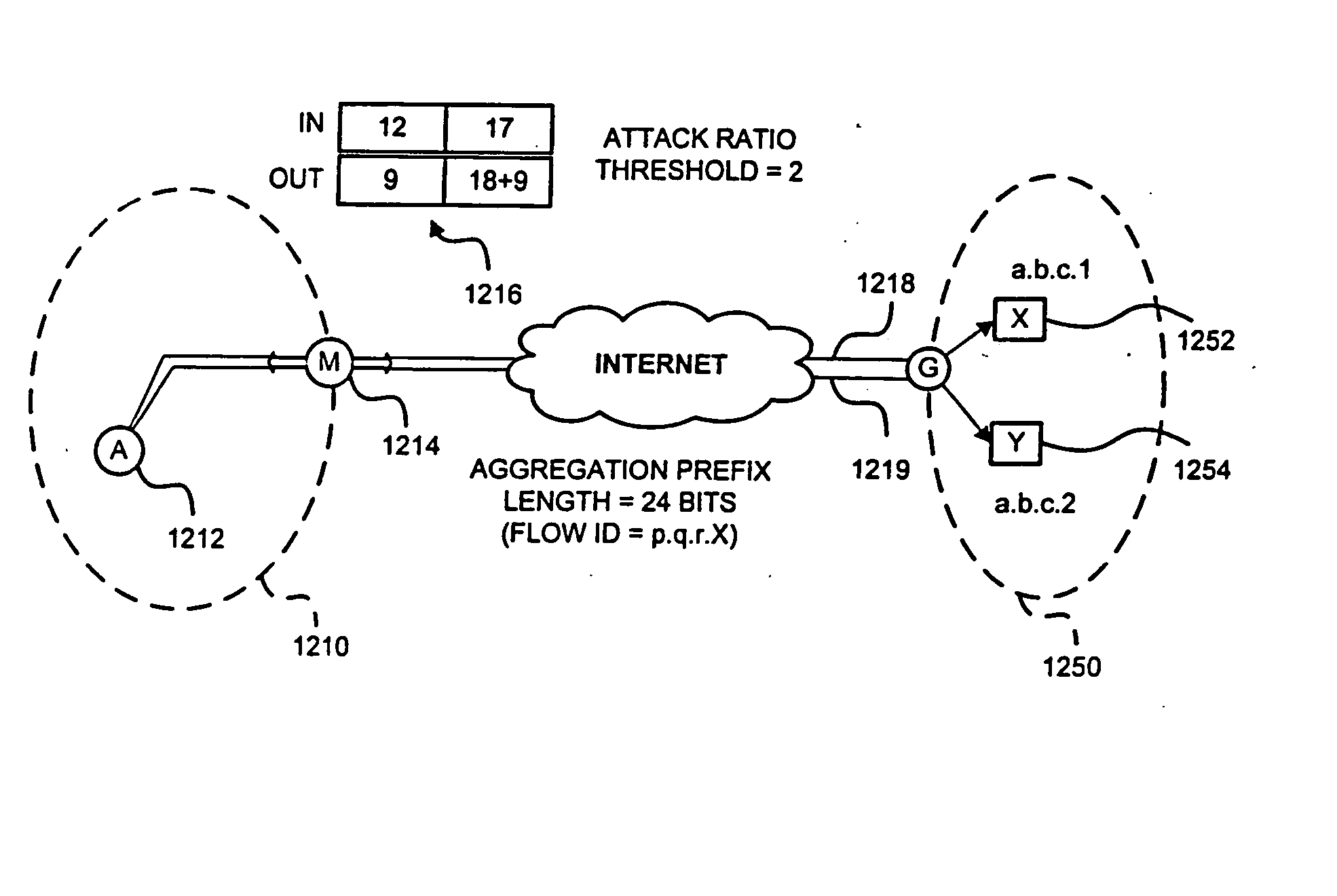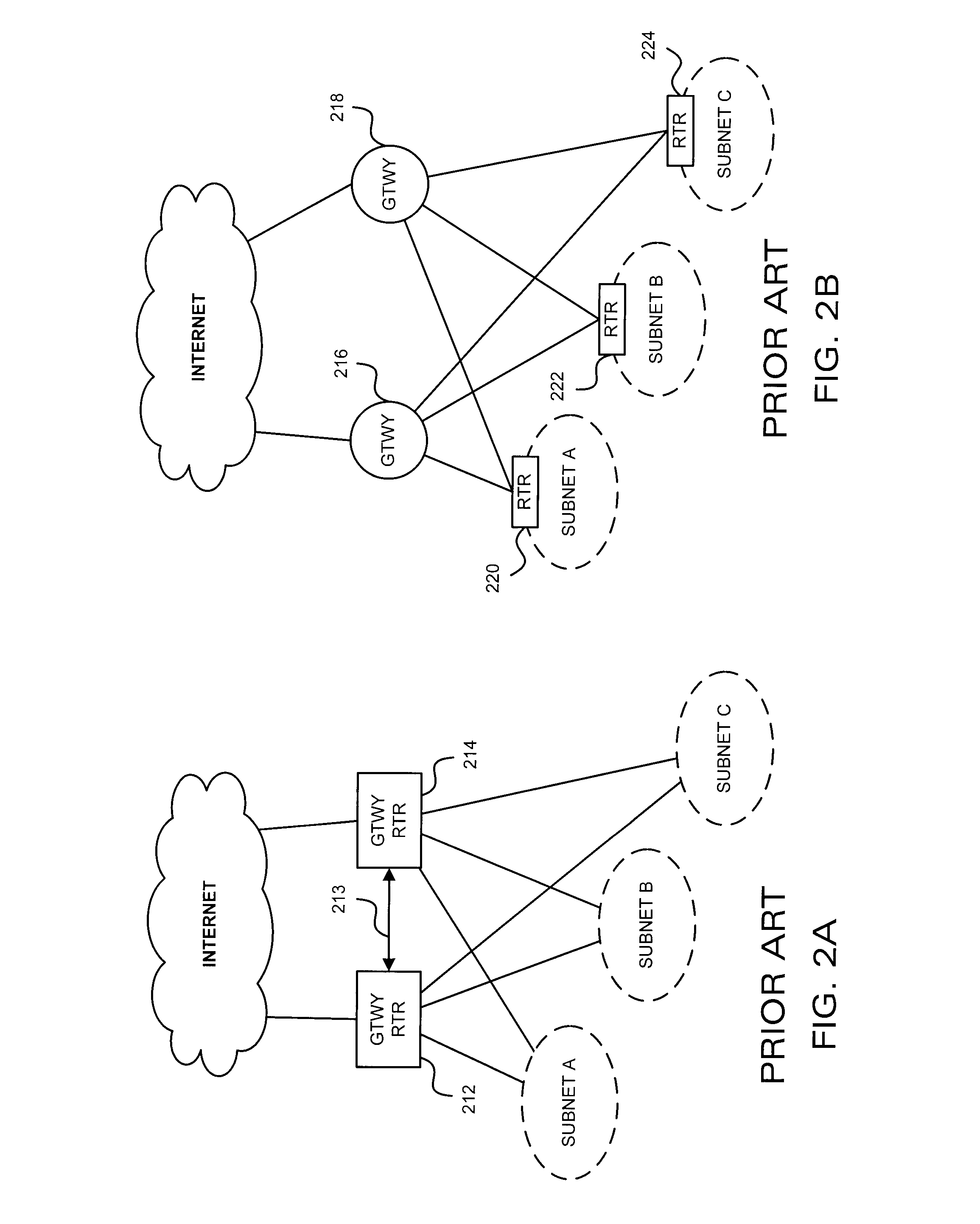Detection of Distributed Denial of Service Attacks in Autonomous System Domains
a distributed denial of service and autonomous system technology, applied in the direction of program control, unauthorized memory use protection, instruments, etc., can solve the problems of inability to process any further service requests by legitimate clients, server failure, and difficulty in identifying malicious hosts or preventing malicious traffic within the intern
- Summary
- Abstract
- Description
- Claims
- Application Information
AI Technical Summary
Problems solved by technology
Method used
Image
Examples
Embodiment Construction
[0051] The present invention is a source-based detection system for deployment in multi-homed autonomous systems (AS), where traffic flows may enter and depart the domain using different border routers. The present invention is passive—it does not induce any packet drops or other techniques to determine protocol compliance and the present invention avoids interfering with the routers' fast path processing. Unlike the MULTOPS system and others, the present invention may be distributed such that traffic monitors are located throughout the AS. Thus, the invention may be adapted to arbitrary AS topologies and the system can easily be scaled to handle very fast access links. The present invention detects many types of flooding attacks, such as direct attacks, pulse attacks and reflector attacks, efficiently and with minimal false positives.
[0052] Prior to describing the exemplary embodiments, it is believed beneficial to first briefly describe the characteristics of a bandwidth attack a...
PUM
 Login to View More
Login to View More Abstract
Description
Claims
Application Information
 Login to View More
Login to View More - R&D
- Intellectual Property
- Life Sciences
- Materials
- Tech Scout
- Unparalleled Data Quality
- Higher Quality Content
- 60% Fewer Hallucinations
Browse by: Latest US Patents, China's latest patents, Technical Efficacy Thesaurus, Application Domain, Technology Topic, Popular Technical Reports.
© 2025 PatSnap. All rights reserved.Legal|Privacy policy|Modern Slavery Act Transparency Statement|Sitemap|About US| Contact US: help@patsnap.com



